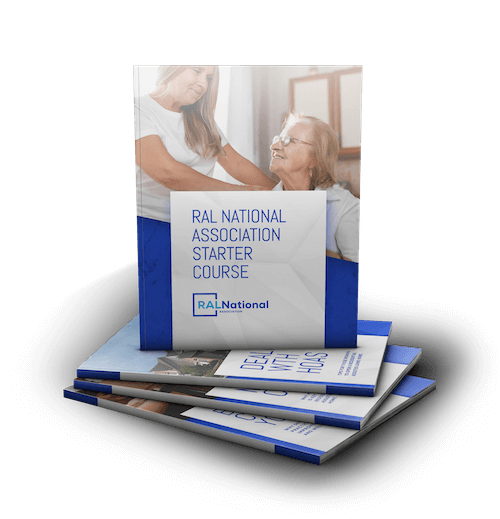[vc_row css_animation=”” row_type=”row” use_row_as_full_screen_section=”no” type=”full_width” angled_section=”no” text_align=”left” background_image_as_pattern=”without_pattern”][vc_column][vc_empty_space][vc_column_text]
How do you know if a resident is suffering from feelings of isolation and loneliness?
[/vc_column_text][vc_empty_space height=”16px”][vc_column_text]Loneliness is like a poison and it’s affecting seniors more and more on a daily basis. In a rapidly growing technological society, caregivers have an added responsibility to safeguard residents from feeling isolated. This is because the negative effects of loneliness in seniors can cause a number of health-related issues.[/vc_column_text][vc_empty_space height=”16px”][vc_column_text]These issues include depression, cognitive decline, dementia, high blood pressure, and many other conditions. Ultimately, the effects of loneliness can reduce longevity and hasten an earlier death. As a result, caregivers have the potential to change these negative pathways and help residents to not feel so isolated.[/vc_column_text][vc_empty_space height=”16px”][vc_column_text]
Causes and Effects Isolation And Loneliness In Seniors
[/vc_column_text][vc_empty_space height=”16px”][vc_column_text]How do you know if a resident is suffering from feelings of isolation and loneliness? There is no cookie-cutter answer to this question because different people have unique personalities. Social isolation isn’t always easy to recognize, let alone tackle. Some people are perfectly fine keeping to themselves. In fact, that’s what some individuals prefer. [/vc_column_text][vc_empty_space height=”16px”][vc_column_text]Whether at work or around family, some people are quiet, unengaged, and much less involved. On the other hand, there are some people who once enjoyed social interactions with family and friends.[/vc_column_text][vc_empty_space height=”16px”][vc_column_text]As they got older, those interactions shrank until they disappeared altogether. These individuals pose a greater concern. It is easy to assume that well-populated senior living communities minimize the risk of isolation. Unfortunately, this is far from the truth. [/vc_column_text][vc_empty_space height=”16px”][vc_column_text]More frequently than expected, previously social individuals sit in their rooms watching television. This social decline is a transition that happens for a variety of reasons. It could be as simple as a senior staying in their room to feel safe. As a result, social isolation increases.[/vc_column_text][vc_empty_space height=”16px”][vc_column_text]
An AARP Report Indicated 5 Primary Risk Factors Associated with Isolation:
[/vc_column_text][vc_empty_space height=”16px”][vc_column_text]
- Living alone
- Mobility or sensory impairment
- Major life transitions
- Psychological or cognitive vulnerabilities
- Small social network and/or inadequate social support
[/vc_column_text][vc_empty_space height=”16px”][vc_column_text]Unfortunately, living in an assisted living home causes many residents to feel isolated away from their families back home. Quality assisted living homes should have mechanisms in place to protect seniors from the risks associated with isolation. Reports also indicate how ongoing social isolation is a detrimental crisis for the health of seniors.[/vc_column_text][vc_empty_space height=”16px”][vc_column_text]
Social Isolation Crisis Amongst Seniors
[/vc_column_text][vc_empty_space height=”16px”][vc_column_text]
- About 8 million people over the age of 50 suffer from isolation (AARP Report).
- Prolonged isolation can be as bad for your health as smoking 15 cigarettes a day (AARP Report).
- Isolation can lead to a weakened immune system, heart disease, depression, and even dementia (Journal of Health and Social Behavior).
[/vc_column_text][vc_empty_space height=”16px”][vc_column_text]Residential assisted living homes are smaller environments with more intimate settings that allow caregivers to build strong relationships with residents. There are many unique ways to use different platforms to help engage residents with others. [/vc_column_text][vc_empty_space height=”16px”][vc_column_text]
Three Connectivity Platforms for Seniors
[/vc_column_text][vc_empty_space height=”16px”][vc_column_text]1. Connecting residents to each other: Allow residents to scrolls through a directory to learn more about those that live in neighboring rooms. Directory biographies will enable individuals to know if they have similar interests, backgrounds or hobbies. These directories also help newer residents make easier adjustments.[/vc_column_text][vc_empty_space height=”16px”][vc_column_text]2. Connecting family members to the community: Digital services allow family members to get a glimpse into various activities taking place at the senior home. Some homes provide access to a customized app that allows family members to see that mom and dad are safe.[/vc_column_text][vc_empty_space height=”16px”][vc_column_text]3. Connecting staff to residents: Caregivers should converse with residents on a routine basis throughout every shift and establish personal relationships. Through conversations and reading their detailed biographies, staff can master the values and interests of their residents and provide exceptional service.[/vc_column_text][vc_empty_space height=”16px”][vc_column_text]
Consequences of Senior Loneliness
[/vc_column_text][vc_empty_space height=”16px”][vc_column_text]Chronic stress and loneliness produce very similar consequences. They raise stress hormone levels in the body, impairing immune responses and causing inflammation, mental illness, and other conditions. Some studies show that factors that lead to heart diseases and diabetes can be related to senior loneliness.[/vc_column_text][vc_empty_space height=”16px”][vc_column_text]According to the Journal of the American Medical Association of Psychiatry, loneliness may be associated with the development of brain biomarkers associated with pre-Alzheimer’s disease. Unfortunately, when seniors feel lonesome, they are more likely to conduct themselves in ways that cause others not to want to be around them.[/vc_column_text][vc_empty_space height=”16px”][vc_column_text]In turn, research shows that they have a tendency to further isolate themselves. They push people away. Many of them don’t even initiate opportunities to engage with others. Loneliness is thought to be contagious because the few people lonely seniors interact with tend to become lonely as well. They follow similar paths to the outskirts of their social networks. [/vc_column_text][vc_empty_space height=”16px”][vc_column_text]This poses serious implications on the health and social lives of caregivers and family members caring for their lonely loved ones.[/vc_column_text][vc_empty_space height=”16px”][vc_column_text]
Ways to Alleviate Loneliness in the Elderly
[/vc_column_text][vc_empty_space height=”16px”][vc_column_text]Family members and caregivers can rectify the situation. Most importantly, caregivers have to be intentional about making it happen. The following pointers are important steps to take to eliminate loneliness.[/vc_column_text][vc_empty_space height=”16px”][vc_column_text]
How Caregivers Can Help Fight Against Loneliness:
[/vc_column_text][vc_empty_space height=”16px”][vc_column_text]
- Listen and observe
- Develop a strategy to defeat seclusion
- Let them teach you
- Bridge the generation gap
- Ask Questions
[/vc_column_text][vc_empty_space height=”16px”][vc_column_text]Your success will take time and effort. In fact, your strategies and effort to connect may appear to backfire at first. Transitioning to an assisted living home can be a totally disorienting experience.[/vc_column_text][vc_empty_space height=”16px”][vc_column_text]This process will require gentle encouragement to help new residents acclimate, meet new people and participate in activities and events. In addition to 24/7 care, residential assisted living provides an opportunity for socialization and fulfillment. [/vc_column_text][vc_empty_space height=”16px”][vc_column_text]
HOW THE RAL NATIONAL ASSOCIATION HELPS CAREGIVERS
[/vc_column_text][vc_empty_space height=”16px”][vc_column_text]Residential Assisted Living National Association is a rapidly growing membership-based organization supporting the assisted living industry. It is the largest RAL organization providing resources and support to caregivers and other key individuals in residential assisted living. [/vc_column_text][vc_empty_space height=”16px”][vc_column_text]The good news is that RALNA is helping to transform caregivers into high-performing individuals that produce expected results. You really do make a difference.[/vc_column_text][vc_empty_space height=”16px”][vc_column_text]In addition, your membership grants you access to group purchasing power, discounts with over 200 RAL vendors, contracted legal advocacy, industry marketing, educational services, memory care training, certifications, marketing, and relevant newsletters.[/vc_column_text][vc_empty_space height=”16px”][vc_column_text]Visit www.RALNA.com for additional information. Be the first to learn need-to-know information and trending hot topics about providing quality care for seniors.[/vc_column_text][vc_empty_space height=”24px”][vc_column_text]How do you know if a resident is suffering from feelings of isolation and loneliness?[/vc_column_text][vc_empty_space][vc_separator css_animation=”fadeIn” type=”normal” color=”#eaeaea”][vc_empty_space][vc_row_inner row_type=”row” type=”full_width” text_align=”left” css_animation=””][vc_column_inner width=”1/6″][/vc_column_inner][vc_column_inner width=”2/3″][vc_single_image image=”99″ img_size=”medium” alignment=”center” qode_css_animation=””][vc_empty_space height=”10px”][vc_column_text]
If you found the information on this article valuable, you’ll find enormous benefits by becoming a member of our community. Visit this page to become a RALNA Member.
[/vc_column_text][/vc_column_inner][vc_column_inner width=”1/6″][/vc_column_inner][/vc_row_inner][vc_empty_space][/vc_column][/vc_row]











